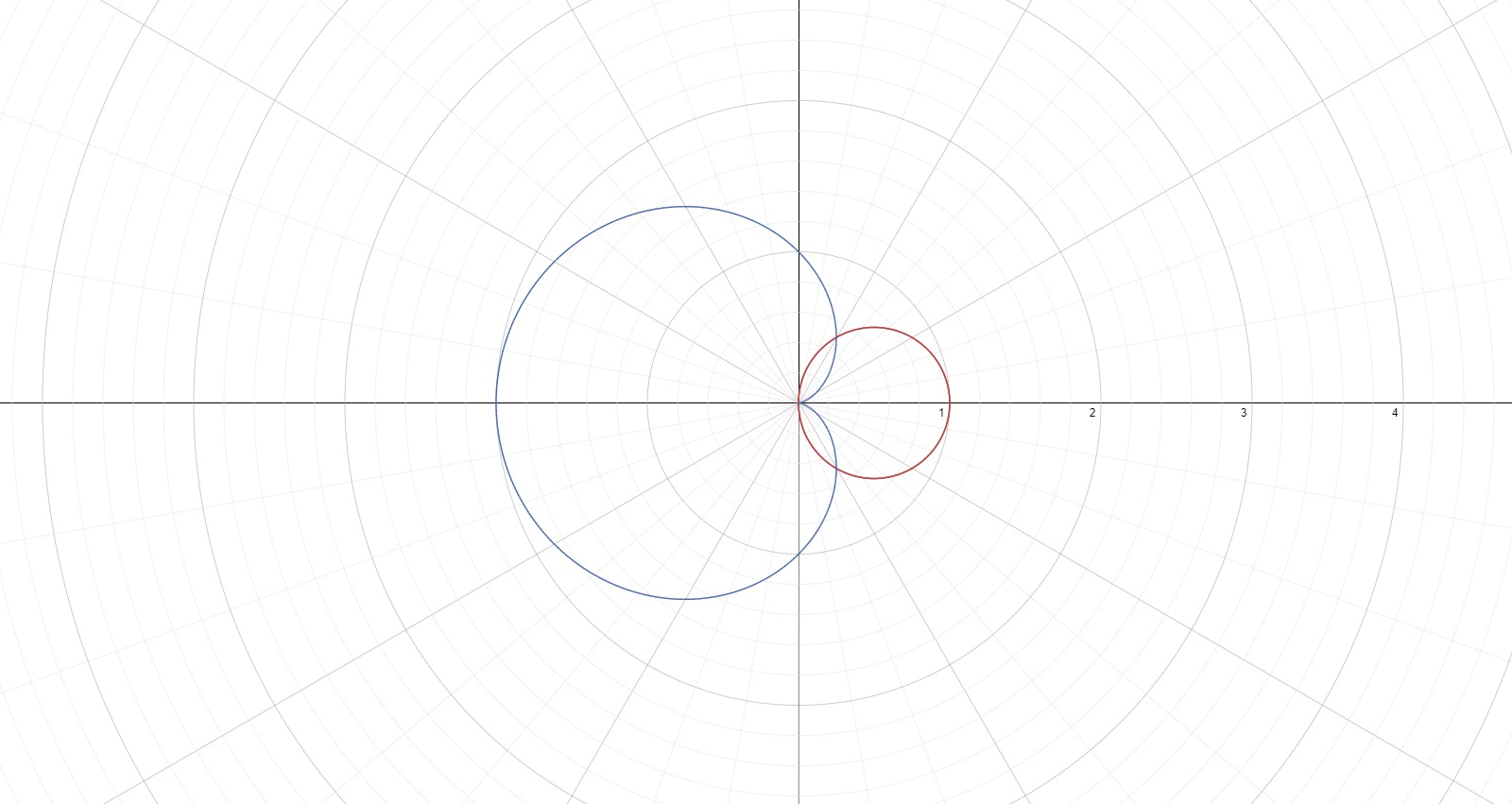.

r=costheta
r=1-costheta
Let's set the two functions equal to each other and solve for theta to find the points of intersection:
costheta=1-costheta
2costheta=1
costheta=1/2
theta=arccos(1/2)=pi/3 and -pi/3
The enclosed areas are between 0 and pi/3 and between 0 and -pi/3, and the two are symmetrical. We can figure out the area enclosed between 0 and pi/3 and multiply it by two:
int_0^(pi/3)(cos^2theta-(1-costheta)^2)(d(theta))
int_0^(pi/3)(cos^2theta-(1+cos^2theta-2costheta))(d(theta))
int_0^(pi/3)(cos^2theta-1-cos^2theta+2costheta)(d(theta))
=int_0^(pi/3)(2costheta-1)(d(theta))=2int_0^(pi/3)costheta(d(theta))-int_0^(pi/3)d(theta)
=(2sintheta-theta)_0^(pi/3)=2(sqrt3/2)-pi/3-2sin0-0=sqrt3-pi/3-0-0=sqrt3-pi/3
Now we multiply it by 2 to get the two enclosed areas together:
=2sqrt3-(2pi)/3

